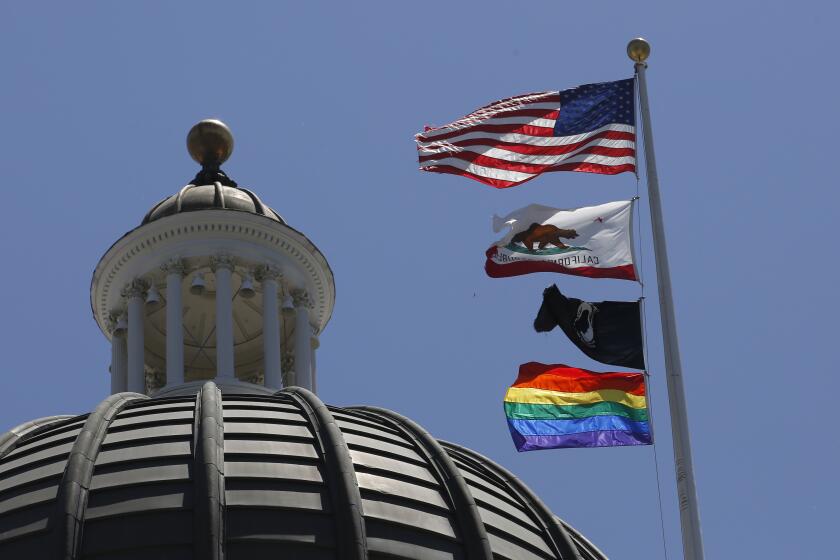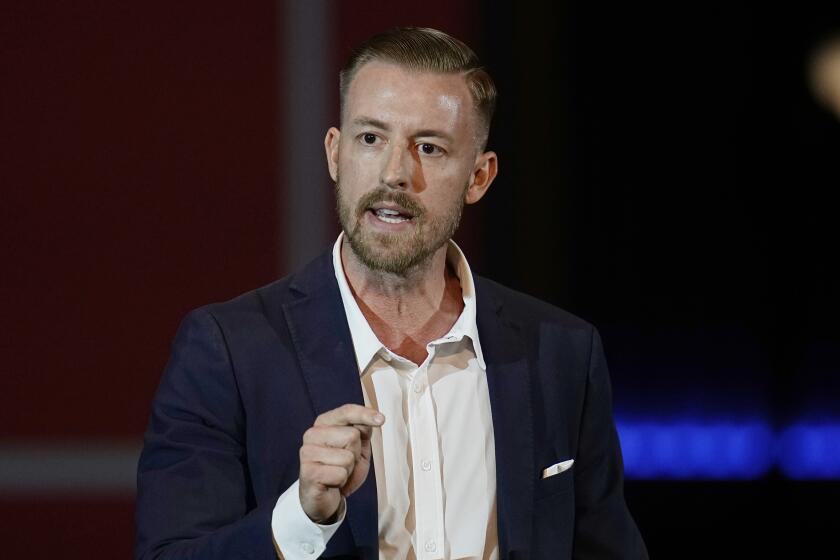Seeing District’s Obstacles as Opportunities
It was Cheryl M. White’s second month as superintendent of the Centinela Valley Union High School District in the South Bay, and already the job should have been testing her.
The embattled district was named this month as one of 18 in California that could be taken over by the state for failing to meet federal goals in standardized testing.
A week later, the state Board of Education gave leaders of a South Bay elementary school system the go-ahead to try to secede from the district.
Then a friend called White and asked, “What did you do to deserve this?”
But this was the job White, 56, had prepared for since college. She was ready.
“I consider myself a problem solver,” White said recently. “I have always wanted to work in urban schools. If you look at the test scores and student achievement levels, you see there’s a real need for qualified administrators.”
White, who has a master’s in multicultural education and administration from UC San Francisco and a doctorate in education leadership from UCLA, has both training and passion for the job. Lately, she has worked 15-hour days. She rarely reads novels anymore. Her last bedtime story was a book called “The Productive High School.”
“My full energy needs to be focused on being superintendent of Centinela Valley,” she said.
White served as assistant superintendent of educational services for a decade before becoming the district’s first female chief in July. The 7,500-student district operates three comprehensive high schools and one continuation high school in Hawthorne and Lawndale. White makes $140,000 a year under a two-year contract.
Centinela Valley school board member Rafael Ramirez said White has already earned respect from board members, the community and the teachers union.
“I admire her,” he said. “It takes a lot to take on the challenges the district is facing. Taking on these challenges says a lot about her. She loves the district. She loves the kids.”
Ramirez said White calls him and other board members about twice a week to brief them on district issues.
In contrast, Ramirez, who was elected in November, could not recall having a one-on-one conversation with Julian Lopez, the former superintendent of Centinela Valley. Lopez, who retired after six years in the post, was widely credited with improving the district’s financial situation, but was highly criticized by the teachers union.
Jeff Good, executive director of the South Bay United Teachers Assn., praised White’s handling of her new position so far. “There’s a lot of inefficiency in the district that has plagued the district for years, and it can’t be changed overnight,” he said. “She’s expressed a real desire to involve all stakeholders in the decision-making process.”
White has set clear goals for the district: boost achievement, teach students to become skilled members of the workforce, engage communities in improving schools, and ensure that all campuses are safe.
Growing up, White attended public schools in Los Angeles and El Centro. She became a teacher three decades ago in the Lynwood Unified School District, and was promoted to principal and district administrator. She joined Centinela Valley in 1994, becoming assistant superintendent in 1996.
Her new office overlooks Lawndale High School’s baseball and football fields. The walls are decorated with a Diego Rivera painting and a poster depicting civil rights leaders.
As she drank from a UCLA coffee cup on a recent morning, White was interrupted repeatedly by phone calls and assistants knocking on the door asking her to approve board meeting agenda items. By noon, she had had five phone conversations with two principals. She also had met with two other staff members to talk about personnel and facilities issues.
“Do you have some time this afternoon?” asked a staff member who popped her head into White’s office.
“I have to go to a Kiwanis meeting, but I will be back in the afternoon,” White replied. Then she turned to a visitor and said the Kiwanis meeting was part of her push to get the community involved in improving the schools.
The district is going to need as much help and support as it can get this year, she said.
Test scores improved at the district’s three high schools for the first time last year. But that was not enough to remove the district from the list of 18 state school districts that failed for the second year in a row to meet testing goals set by the federal No Child Left Behind Act. The state Education Department warns that these districts could face takeovers or other sanctions if they do not show progress in the next three years.
It’s a tall order, but White is confident scores will improve. Still, she said the district was appealing the state rankings because of the way they are calculated. Centinela Valley wound up on the list because it barely missed the requirement to test 95% of its students each of the last two years. Plus, its graduation rate dropped and its low-income students also performed slightly below expected levels.
Critics of the testing system, including White, point out that schools and districts are judged on up to 46 criteria and that the federal method does not give credit for incremental improvements. Subgroups such as whites, Asians, Latinos and African Americans also have to demonstrate proficiency on the tests.
“We’re going to make sure we get out of that position,” White said. “It’s our focus. This year, our theme is: What are students learning?”
A small group of community members and parents in one South Bay elementary school district say the answer to that is, not enough.
Wiseburn Elementary School District is proposing to secede from Centinela Valley. It wants to open its own high school instead of sending its students to Centinela Valley’s campuses. Wiseburn is one of four elementary districts, including Hawthorne, Lawndale and Lennox, that feed into the Centinela Valley district’s four high schools.
Recently, the state Board of Education authorized a local vote -- for Wiseburn district residents only -- on their effort to split from the district. The election will be held in March, and, if approved, a high school for Wiseburn would probably open by fall 2006.
White was disappointed by the decision. She wanted residents of the entire high school district, not just the Wiseburn portion, to be allowed to cast ballots. Wiseburn provides a large chunk of the tax base for the entire high school district. Its departure would slice deeply into the remaining district’s ability to pass bond measures for repairing campuses and building schools, White said. Plus, she said the departure would take some of the best students and deprive youngsters of the opportunity to experience wider diversity.
“It is a challenge,” White said. But, she added, that’s the reason she’s there: to turn the district into one “where students want to attend, parents want their students to attend, and teachers want to work.”
More to Read
Start your day right
Sign up for Essential California for news, features and recommendations from the L.A. Times and beyond in your inbox six days a week.
You may occasionally receive promotional content from the Los Angeles Times.






